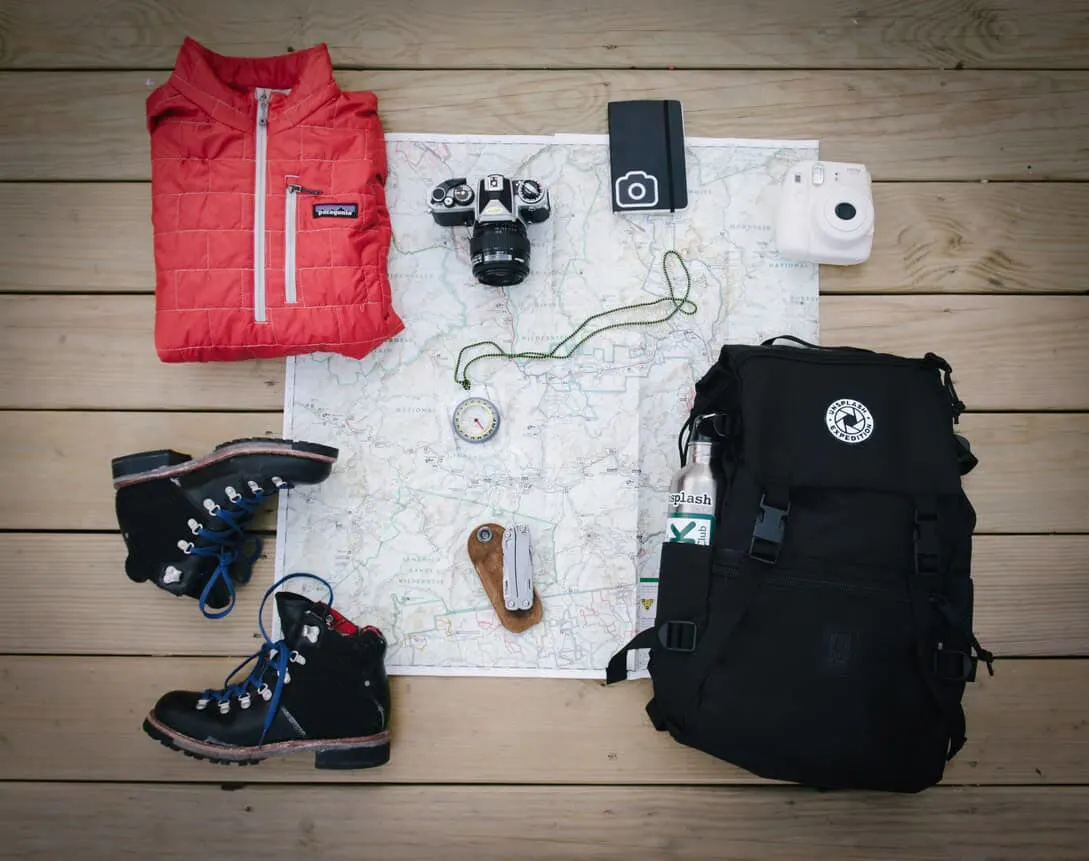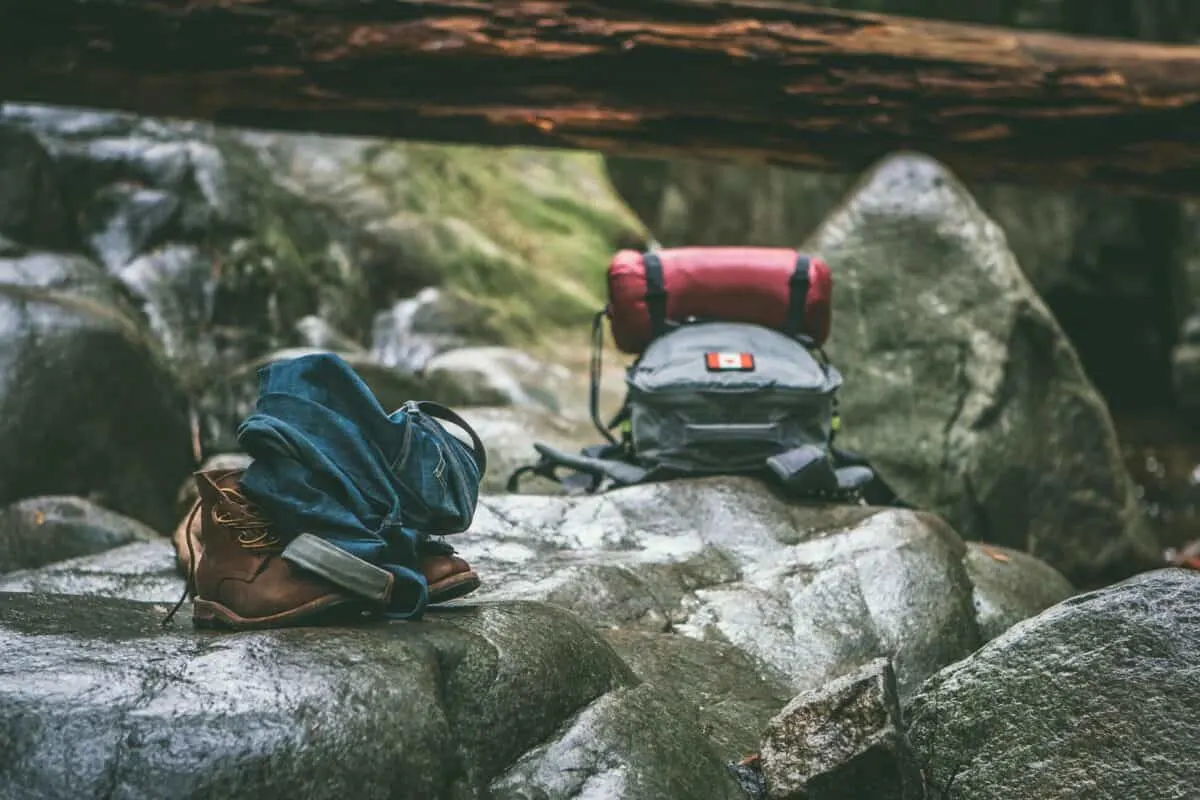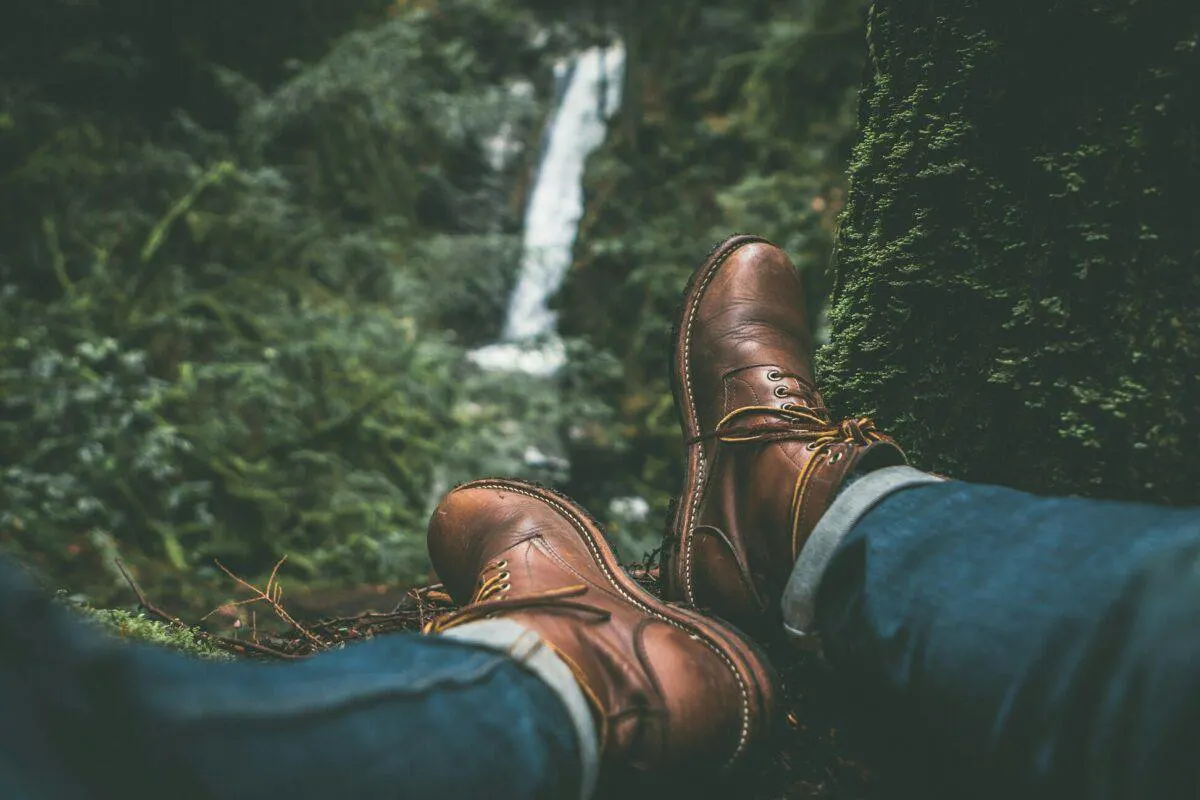
There is something about hiking that inspires the spirit and propels us to greater heights. Tricky terrains, well-worn paths, and tracks that require true grit push us to get out of our daily grind and head into the great outdoors.
Choosing the right hiking gear is what separates a safe and enjoyable adventure in the great outdoors from an uncomfortable experience with Mother Nature. With so many options available, it can be overwhelming to know where to start.
It takes an avid hiker to know what gear is best for the trek ahead, and we’ve spent our fair share of time on the trails. Featuring our insights and professional recommendations for making the right decisions for your hike — whether you’re a beginner or experienced — we’ve built a step-by-step process for picking out the best gear possible for your hiking journey.
Be ready to enjoy your next adventure wholeheartedly, with knowledge arming you with ways to tackle the trail.
Why Choosing the Right Hiking Gear is Important
If you plan to hike, focus some energy on getting the right gear. This is an impactful choice and can greatly affect your time outdoors. Having the proper gear with you can play a key role in having an enjoyable experience overall, whether this means protecting yourself from harsh weather or making sure that you are fully supported to push through challenging trails.
Think of it this way: you’re not spending money on things so much as you’re investing in your safety and comfort.
Good footwear, for example, can prevent blisters from occurring on your feet and could save you from ankle injuries or feeling fatigued in the middle of a hike. A good quality hiking bag will help distribute weight properly, resulting in less pressure on your back and reducing strain caused by other normal shoulder bags.
Picking the right clothes and properly layering up can keep you warm, dry, and protected from sunburns through heat waves, allowing you to focus fully on your journey rather than being miserable all day due to discomfort!
Additionally, wearing the proper hiking gear can add to your total experience by offering functional designs to aid in performance, such as breathable fabric and tools that enhance your navigational powers. If you can choose your gear correctly, every hike will be a successful and exciting adventure.
The Best Hiking Gear for Beginners

Gear for hiking is limitless, so it may be overwhelming if you are new to the game. That said, there are some basics that every beginner hiker should have in their bag. Having these essentials will keep you safe, comfortable, and, best of all, happy out on the trails.
Decent hiking boots or shoes are a given. These should have a snug fit, good support, and a stable grip, and they should be appropriately worn before your first real hike with them. Sturdiness and comfort are also important in a pack as well, with beginners requiring the latter for everything they carry (water, fuel snacks, extra clothing layers).
Bring your own hydration or water bottle. It is incredibly important to stay hydrated in warm or strenuous conditions. A lightweight rain jacket or poncho will also save you from unpredictable showers or sudden weather changes.
A map and compass (or GPS tool) are essential for following your course and not wandering off into the bushes. You might need a headlamp or flashlight if you are going to hike beyond dusk or you’re heading out on dark trails.
Bring a small first-aid kit with bandages, antiseptic wipes, and any needed medications. These basic essentials will further equip you to go on your maiden hike confidently and make the most of the wonders of nature.
Gear for the Advanced Hiker
As you advance on your hiking adventure, you will want to level up your hiking gear game. Advanced equipment may cost more, but ultimately, there will be a difference in comfort and safety.
Lightweight, sturdy, and comfortable backpacks with all the features you expect, including adjustable straps, ventilated panels, and numerous compartments, will be your best friend on an advanced hike.
Technical clothing sounds futuristic, but it really is just clothing that performs while you hike. Think moisture-wicking fabrics, quick dry technology, and natural fabrics to minimize sweat and overheating. Built-in sun protection is also a must for hiking in summertime.
Altimeters, barometers, and electronic compasses are an advanced hiker’s best friend, keeping you on track and providing critical safety information like elevation, weather conditions, and more precise locations.
It’s also essential to think about your hiking location. Traction devices are important for hiking in icy or snowy conditions. Finding an old stick on the side of a trail might work well for less serious hikes, but if you plan on getting serious, these tools will support you in your hiking endeavors.
How to Choose the Right Hiking Boots

Hiking in sneakers or trainers really isn’t going to cut it when you are trying to traverse rocky paths, steep inclines, and slippery tracks. Investing in hiking boots is critical to ensure you have the right foundation for your feet and supportive traction for your hikes.
Hiking boots aren’t cheap, so research is important before selecting a pair. Have a good idea of where you plan to hike. Will it be well-maintained trails, off-the-beaten-track terrains, or steep inclines? A low-cut boot is likely suitable for well-trodden paths, but you may want a higher-cut boot for more challenging tracks with added support for your ankles.
Nobody wants to hike with blisters, so make sure you choose a snug, well-fitted pair of boots made of high-quality materials like full-grain leather that can withstand the rigors of a vigorous hike and tricky terrain. You should also look for full arch support if you suffer from arch issues.
Tips for Selecting the Perfect Backpack
Not sure what backpack to choose? Since your backpack will become your lifeline, you must take the time to research to ensure you select the right one.
The first things to consider are capacity and size, which will be determined by the length of your hike, ongoing needs, and whether you will be camping overnight. Day hikes require a 20-30 litre pack, and overnight or multi-night hikes generally require a 50-70 litre backpack.
How it fits on your body is crucial. It must be able to adjust your torso’s length and hip size to ensure proper weight inside is normally distributed, with the load well balanced. A good-fitting backpack could make a world of difference in trying to minimize strain on your back, shoulders, and hips.
Another important feature to consider is the backpack’s suspension system. Look for packs with padded, contoured shoulder straps, a supportive hip belt, and a breathable, ventilated back panel to help keep you cool and comfortable, which will be necessary on long hikes.
Look for a well-organized pack with multiple compartments, exterior pockets, and attachment points. This is handy when you wish to keep your stuff in order and at your fingertips. Consider your specific needs and the activities you’ll be engaging in when evaluating the various organizational options.
Also, consider the materials used for the backpack construction. Look for details like durable, water-resistant fabrics with reinforced stress points so your pack will survive into the next adventure.
Proper Clothing and Layering – Why It’s Important
Proper clothing is vital for the success of a hike. It will shield you from the weather, keep you cozy and comfortable, and allow you to easily control your body temperature. As the saying goes, “Layering is a hiker’s best friend.” You definitely want to be able to take off and put on clothing as you hike should conditions change.
Hikers need mid-layers to keep them warm and protected, as well as outers that can block wind and keep moisture out.
Along with these fundamental layers, other necessary clothes include hiking socks, gloves, and a hat. Moisture-wicking socks prevent blisters, and a warm hat and gloves can make a difference in comfort (and safety) when the temperature lowers drastically, especially if you go on an overnight hike.
Overnight Hiking: How to Choose the Right Camping Gear
For those who go on for more than a day and through the night, the necessary camping equipment dictates the quality of the experience. Proper equipment for this kind of exploration will help make a safe and enjoyable trip.
A shelter and a comfortable sleeping system are indispensable. When you pick out your camping gear, consider the trip’s requirements: what kind of terrain, weather, and length of the hike.
Think about the number of people the tent is designed for, the seasonal rating, and weight and pack size. Having a lightweight, easy-to-set-up tent can be a game changer, especially when one has an extended hike where every ounce of weight counts.
The other crucial camping gear is your sleeping system, which incorporates your sleeping bag and pad. Check out the various selections and find a sleeping bag rated for the temperatures you will experience. A sleeping pad should also provide enough insulation but adequate cushioning to ensure you get the best beauty sleep under the stars.
A dependable stove, some fuel, and a water purification system are paramount. Find something compact, lightweight, and effective that meets your requirements but does not add unnecessary weight to your pack.
Other essentials in terms of camping equipment shall be a headtorch or flashlight, a first-aid kit, a multitool or knife, and tools to light a fire. They’ll help keep you safe, navigate the dark, and solve unanticipated situations on your overnight hike.
The Best Hiking Gear Brands to Consider
Brand choice for hiking means a lot for the equipment’s quality, performance, and durability. Many of the well-known brands in the industry come with some of the best products and place customer values first.
Patagonia ranks high in reverence in outdoor clothing manufacturing. With a firm commitment to sustainability in making garments, Patagonia offers high-quality hiking and camping gear, from technical apparel to backpacks and sleeping bags.
Another all-time favorite with hikers is The North Face, which has pioneered outdoor gear for ages. The innovative design that their products carry and the superior materials they are made of go a long way in making them provide reliable performance for both casual and experienced hikers.
More advanced specialized equipment may be considered from brands like Osprey and Deuter. These firms are renowned for mastery of backpack design and engineering; they provide a wide variety of packs that fit different hiking needs and body shapes.
Salomon, Merrell, and Keen are just three of the many favored brands for hiking boots and shoes because their products are well-built, durable, comfortable, and fit just the way you want. These companies’ latest technologies and materials offer maximum support and traction on the trail.
Lastly, think of MSR, Jetboil, and Coleman for camping and outdoor cooking gear. They’ve had an excellent reputation for high quality and performance with innovative products that can stand up to the hardest of uses in the great outdoors.
By researching and selecting your gear from these reputable brands, you can have that assurance that what you’re investing in is a piece of equipment that will work hard on those hiking adventures.
Where to Get Your Hiking Gear
With numerous places to shop from, choosing a location can be as important as the gear itself. One of the most accessible and convenient modes of shopping is locally at your closest outdoor store. Most of these shops have impressive inventories of hiking and camping supplies. The highly knowledgeable staff may also provide advice and recommendations based on your specific needs and preferences.
For an even better selection and likely a better price, alternatives would be online retailers like REI, Backcountry, and Moosejaw in the U.S. These websites offer a variety of hiking and camping gear from all leading brands; furthermore, information about products and customers’ reviews, with sizing guides, eases the purchase choice.
Specialty hiking and outdoor gear stores tend to deal more with select items of higher quality and technical aspects, and their staff will often be more informed and helpful. Of course, you’ll be paying quite a bit more for the experience.
Looking for second-hand hiking gear through online marketplaces like eBay and Facebook Marketplace might be worthwhile. You will often find some slightly used but in good condition material at a fraction of the price, which serves one’s purposes well if on a budget.
Research, read reviews, ask questions, and do your due diligence, whether shopping at a local store or surfing the net.
Gear Up for Your Next Outdoor Adventure
Take the time to choose the right hiking gear suitable for your hiking plans and adventure needs. Doing so will ensure you have a safe, comfortable, and successful hike, are fully supported by your boots and clothing, and have a memorable hiking experience.
Whether you’re planning a day hike or a backpacking trip across the world (this sounds like a dream!), you now have the information you need to navigate the world of hiking gear and embark on your next outdoor adventure with confidence. So, lace up your boots, pack your bags, and explore the great outdoors in comfort and style. Happy (and safe) hiking!
This article originally appeared on Travel Binger.

Zachary Skinner is an ex-snowboarding professional who shares his passion for the outdoors through his website, tech.drive.play, encouraging readers to embrace adventure and explore new horizons.


